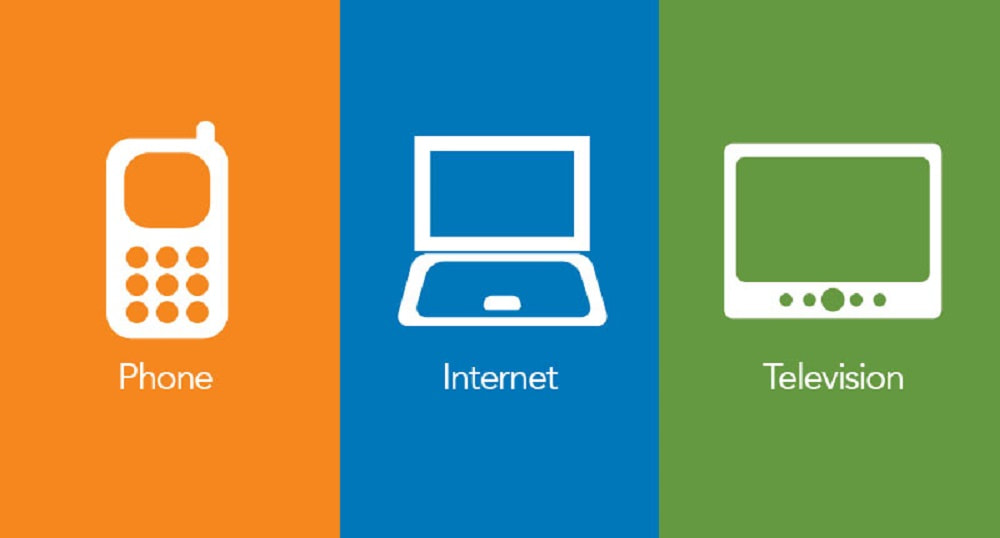Learn how to navigate the deals and come out on top.Why pay full price for something if you can get what you want, plus another item, at a discount? This is called bundling, and researchers have been studying the pros and cons of it for decades. Although many consumers think of bundling as a modern concept — it’s often used to combine TV, internet, and phone services, for example — the practice has been around for years in a variety of forms. As a homeowner or renter, navigating the benefits and pitfalls of bundling household services means using a little common sense and a bit of economic reasoning. It also requires being aware of when and how products are bundled. What is bundling? Everything from fast-food combo meals to items in a two-for-one deal could be considered bundled, especially if sold at a lower price than the separate parts. For households, bundling might mean purchasing home and car insurance together at a slightly lower rate — the average American, for example, saves 16 percent when bundling the two policies, according to the latest data from InsuranceQuotes.com. The possibilities for bundling household services abound, according to Andrew Schrage, co-owner of Money Crashers Personal Finance: “You might find someone on Craigslist who can help with electrical, plumbing, and air-conditioning/heating needs. You’ll likely get a discount, because you’ll be bringing that person more work.” Mixed versus pure bundling There are several types of bundling, each with varying levels of consumer benefit, according to George John, a professor at the University of Minnesota’s Carlson School of Management. As a homeowner, you’ll most likely encounter these two types:
In such a scenario, consumers are worse off, because the seller increases its profit by requiring such a deal. The company can get away with it “because they have a very strong market position,” John says. Understanding your needs is key Why are so many services offered in bundles? “This is somewhat controversial, but it turns out that companies make more money when they offer you discounts on those bundles, because consumers get tempted into buying it,” John says. To win at the bundling game, keep your needs in mind, and stay strong in the face of alluring deals. Bundles are a true victory for consumers only if they genuinely need all parts included in it. When consumers fail to shop around for the other items in the bundle and go for the packaged deal instead, they often walk away with products they don’t want or need — and sometimes pick up lesser-quality goods along the way. Finally, the touted time-saving advantage of combining bills, which service providers sometimes use as a selling point, may not economize that much time, especially if a consumer would be signing up for automatic bill payments anyway. Service providers “want to take your attention away from the fact that it’s actually a price move. They want to tell you that you’re getting a better experience if you bundle,” John says. Client-controlled bundling Consumers triumph when they control what’s in the bundle. Have a nanny who you pay a little extra to make dinner each night? That’s a bundle. “It’s totally a good deal, because you know the benefit that comes from having the same person watch your child and cook for you. You’ve made the judgment,” John says. At the end of the day, discipline is key. Saying no to unnecessary items, looking for other options instead of pure bundling, and refusing to be duped by false benefits will ensure you win the bundling game. On Point Homevestments
0 Comments
Once you've got the basics, it's time to do a little more digging.Nearly every home search starts online these days. Sorting through listings, photos, floor plans and descriptions is a great way to feel out the market for those who are in the earliest stages of the home search. When you find a home you’re ready to bid on, it’s incredible how much background information you can find online. The Internet is full of data on past home sales, recorded sales prices, and the history of each sale, plus information that may not be as obvious — such as the safety of the neighborhood you’re considering buying into. Here are three ways to use online tools and real estate mobile apps to get more details about the home you want. Check building records Nearly all public information and documentation is now available online, and most municipalities provide web access to building permit history. Although the law requires most sellers to disclose previous work done on the property, there may be a history of earlier work the seller didn’t know about. For example, if there is a newer bathroom or kitchen but no history of a permit for the work, there is a chance someone did the work without a permit — and potentially not to health or safety code. And if you become the owner, this unpermitted work becomes your responsibility. To begin your search, type “building records,” plus your city’s name into your favorite search engine. Example: “building records Seattle.” Use Google Street View Researching an address using Google’s Street View can be one of the most revealing options available. Street View provides a snapshot of a property at a particular moment in time, which can provide insight into the recent history of the property or neighborhood. Be aware, however, that the image you see may not accurately reflect the home’s current state. For example, I helped a homeowner list and sell a home in San Francisco’s Lower Haight neighborhood a few years back. We planted a beautiful garden area to create a buffer between the sidewalk and the windows. But a search for the property on Google Street View revealed the windows with bars on them, and no garden. The previous owner had bars on the window, and someone had removed the bars to make the property look more inviting. Seeing the windows with bars on them in Google Street View could raise questions for potential buyers: Is the neighborhood unsafe? Was there a history of crime in the community or on the property? Are the street-level windows safe? Consult a neighborhood crime app A variety of crime reporting apps for mobile devices show on a map recent crimes that have been reported, including assault, theft, robbery, homicide, vehicle theft, sex offenders, and quality of life (which often means noise complaints). It’s an easy way to get a quick overview of how safe or unsafe a neighborhood is. So much information is available to buyers these days. You don’t need to rely solely on the seller’s or the real estate agent’s disclosures. Use online resources to find out as much background information on a property as you can, either before making an offer or during your contingency period. It is best to do as much research as possible, in order to make an informed final decision. On Point HomevestmentsYou might know your SEO from your SEM, but do you know how your website ranks against competitors? Although the only metrics that really matter are your own company’s brand equity and sales, it’s a helpful integrated marketing activity to suss out the competition online and know how you stack up. Fortunately, with the abundance of free and low-cost tools available, you can benchmark your website against the competition and create a plan for improvement. Work with the Numbers First, fire up your favorite search engine and type in a relevant service or product. Where does your site appear in comparison to the competition? This ranking measures nonpaid, also called organic, relevancy and is one of the most-important indicators of the performance of your website. Sites that rank higher receive more online traffic and feature more relevant content for users. Second, does your site carry authority? To find out, you’ll need to measure the off-site optimization of it. This refers to the factors that have an effect on your site, such as backlinks. These are links on other websites pointing back to your website. Backlinkwatch and Open Site Explorer are two free online tools that give you visibility into the backlink ranking of your site or competitive sites. Third, look holistically at all of your online marketing efforts. One popular way is to run your website through Marketing Grader to get a report card of how your website and online marketing is performing. Then, run a competitive URL through the online checklist to determine its strengths and weaknesses. media junction also offers a free online competitor analysis that rates your website against three competitor properties. “Once you run the analysis, put together an action list of what areas you can improve and what you can do differently than your competitors,” advises Jessica Meher, a marketing manager at HubSpot and founder of clickify, an inbound marketing and web design agency. By staying ahead of your competition and comparing important site performance metrics against key competitors, you can find out which strategies are working and refine future integrated marketing activities. ON POINT HOMEVESTMENTS |
Details
Archives
February 2019
Categories
All
|
Company |
Services |
|
Possibilities







 RSS Feed
RSS Feed